Our Mission: Environmental Prediction Science
With climate change now becoming a major issue, understanding the Earth's atmospheric, marine, and hydrological systems is a major goal of earth science. “Understanding” in empirical sciences means exploring and extending “predictability”. Our research group promotes prediction sciences for the terrestrial environments by combining satellite observations and various prediction methods. Specifically, we are exploring advanced methods for medium-range (up to a few weeks) weather forecasts. In addition, we make 100-year-scale predictions of hydrological changes induced by climate change. For the predictions, we use both process-driven and data-driven approaches, i.e., numerical simulation and machine learning. Here, statistical mathematics including data assimilation plays an important role to improve predictions by incorporating massive satellite observations. We are pioneering the state-of-the-art environmental prediction sciences through cross-disciplinary research covering earth science, computational science, and statistical mathematics.
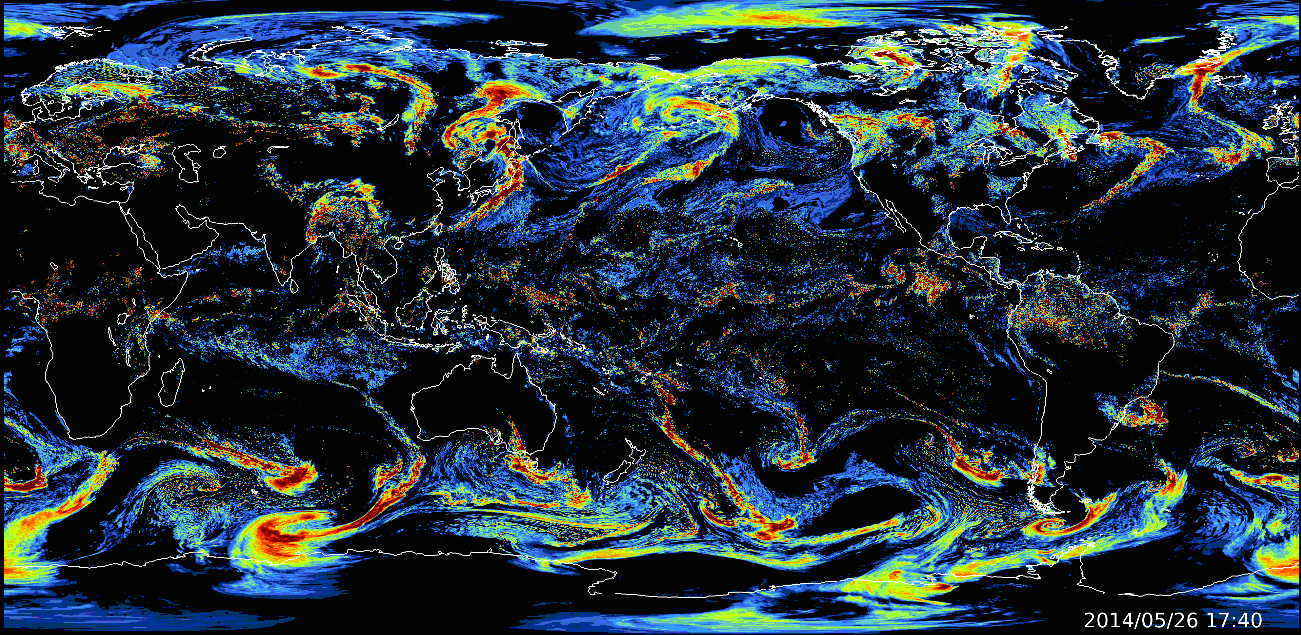 A global precipitation forecast using the Nonhydrostatic ICosahedral Atmospheric Model NICAM
A global precipitation forecast using the Nonhydrostatic ICosahedral Atmospheric Model NICAMWeather Forecast Research with the Global Atmospheric Data Assimilation System
In recent years, severe weather-related disasters caused by climate change have been widely observed all over the world. Thus, improving numerical weather prediction (NWP) is crucial for protecting human environments. Data assimilation plays an essential role in NWP, since it contributes to the provision of initial conditions for NWP models. In particular, ensemble data assimilation methods have become important because of their suitability for the parallel computing systems used in supercomputers. We have been developing a global atmospheric data assimilation system, which incorporates the Nonhydrostatic Icosahedral Atmospheric Model (NICAM) and the Local Ensemble Transform Kalman Filter (LETKF), in collaboration with RIKEN, the University of Tokyo, and the Japan Aerospace Exploration Agency (JAXA). This system assimilates large amounts of satellite observation data to provide the best possible estimates of global atmospheric conditions. It has been running on the JAXA supercomputer since 2017 as NICAM-LETKF JAXA Research Analysis (NEXRA). For a heavy rainfall case study in July 2018, we revealed that the record heavy rainfall in western Japan was predictable about 3 days in advance.
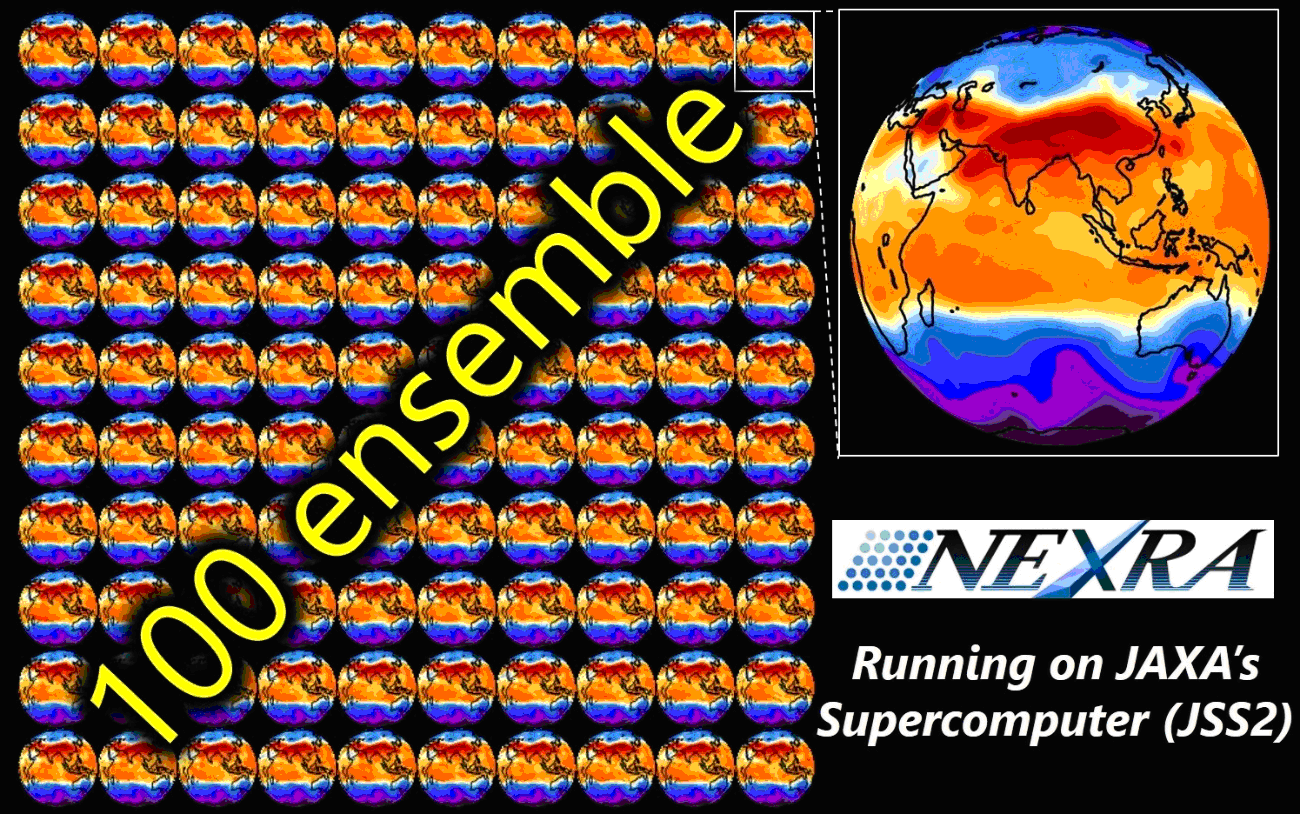
The near-real-time global atmospheric data assimilation system NEXRA running on the JAXA’s supercomputing system
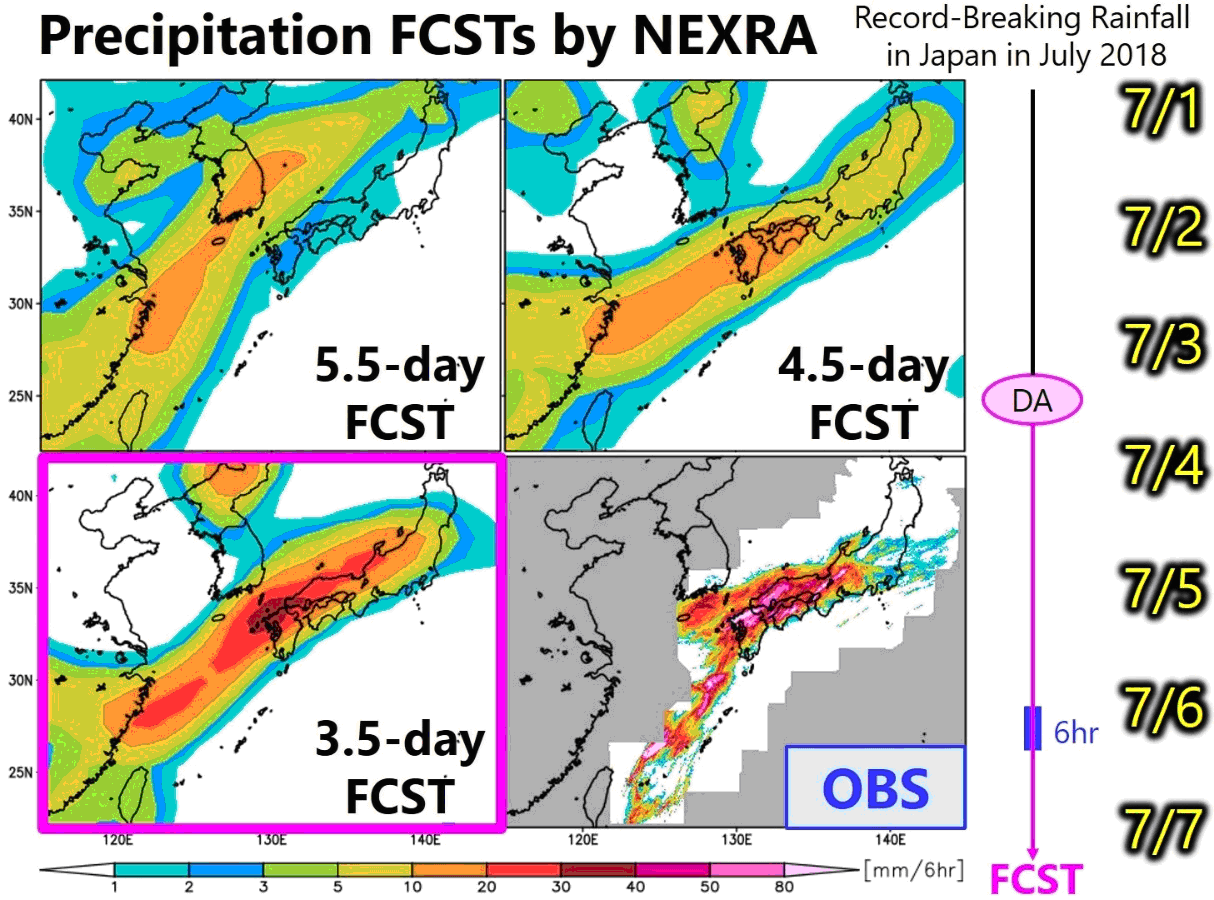
Ensemble-mean precipitation forecasts by NEXRA: A case for Record-Breaking Rainfall in Japan in July 2018
Impact Estimates of Climate Change with an Integrated Water Resources Model
Current human activities are having a significant impact on the hydrological cycle. Since the issue of climate change become increasingly important, evaluating the impact is urgently required. For impact estimates of climate change, we have been developing an integrated water resources model (Simple Biosphere including Urban Canopy; SiBUC), in collaboration with Kyoto University. SiBUC is comprised of five sub-modules: land-surface hydrology, irrigation, rice growth, dam operations, and river discharge. Therefore, this unique model can simulate the natural water cycle on land, as well as rice yields and the effects of human activities (such as dam operations, water withdrawal, and irrigation). To drive these simulations, satellite observations are used as initial and boundary conditions. For example, we successfully estimated global crop sowing dates based on time series analysis of satellite-sensed vegetation index data. We are also exploring the impact of climate change on water resources using general circulation models. We are going to link our environmental projections with social science research, to realize sustainable societies through adaptation.
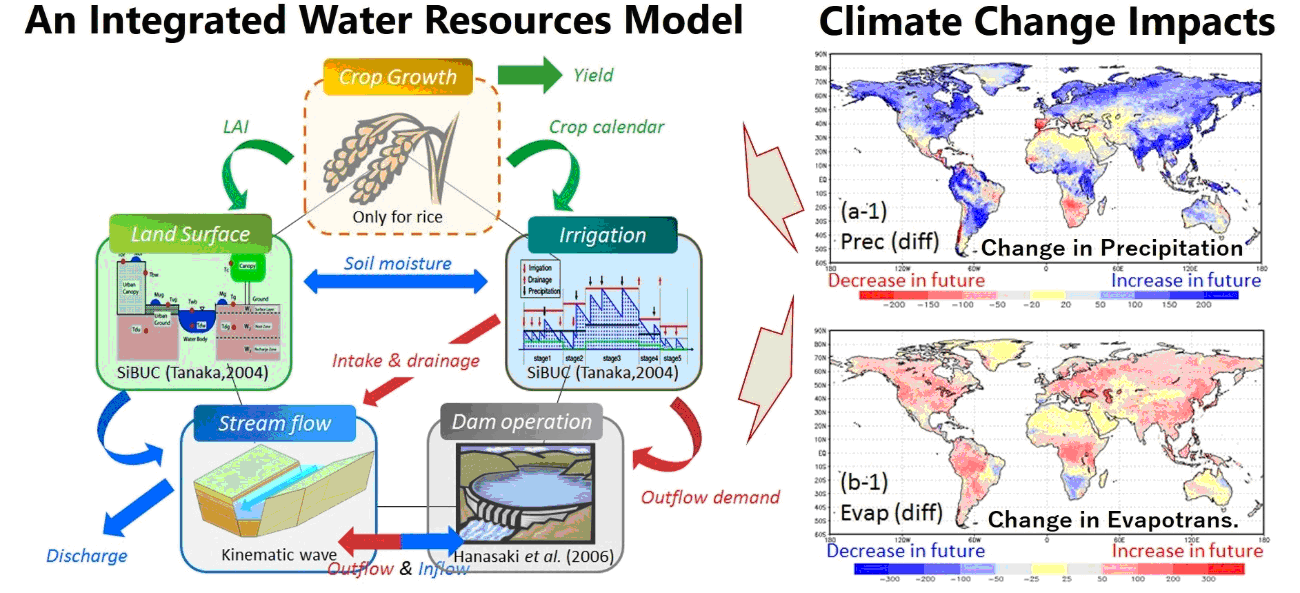
Climate change impacts on hydrological cycle estimated by an integrated water resources
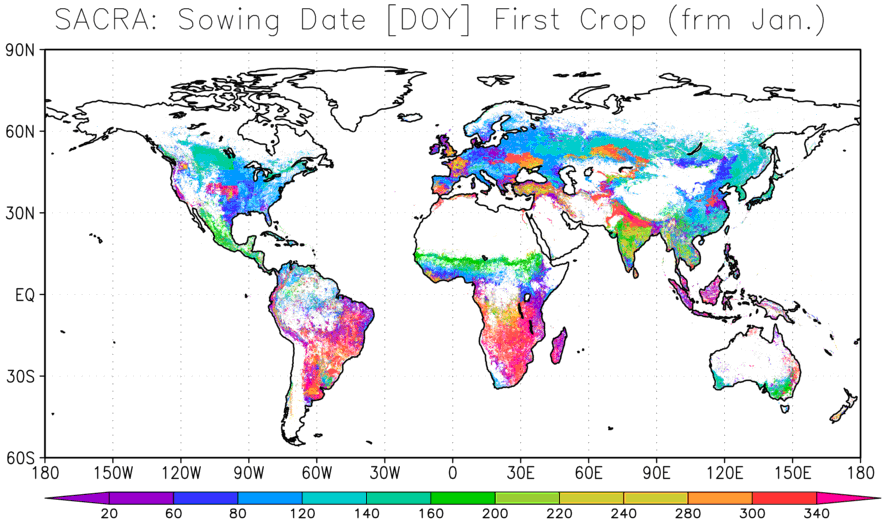
Global sowing dates of major crops estimated by the satellite-sensed vegetation index
